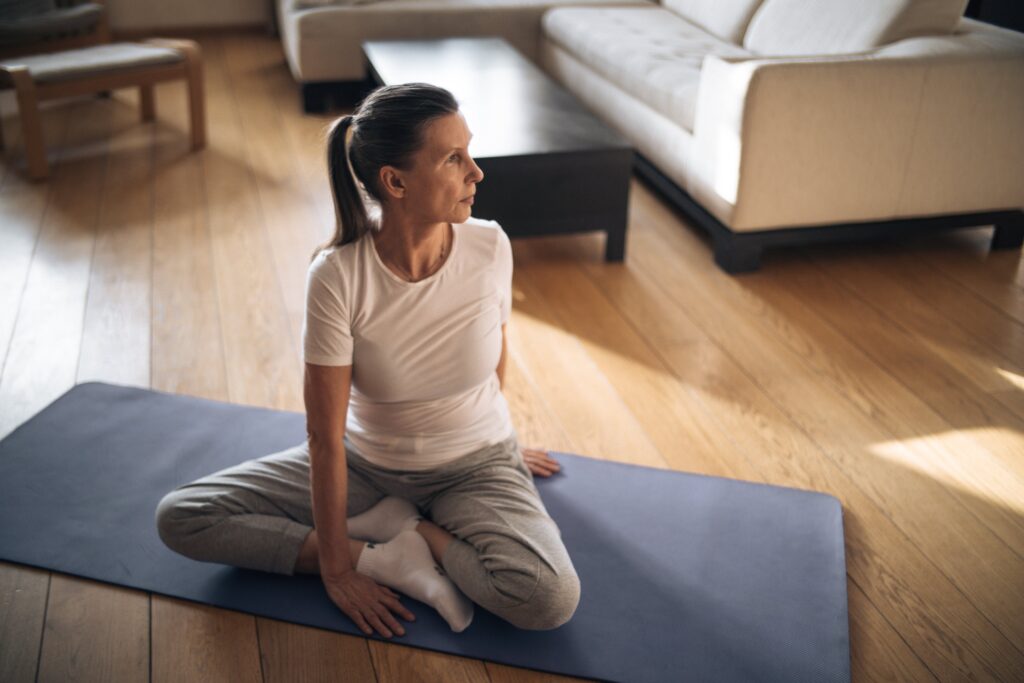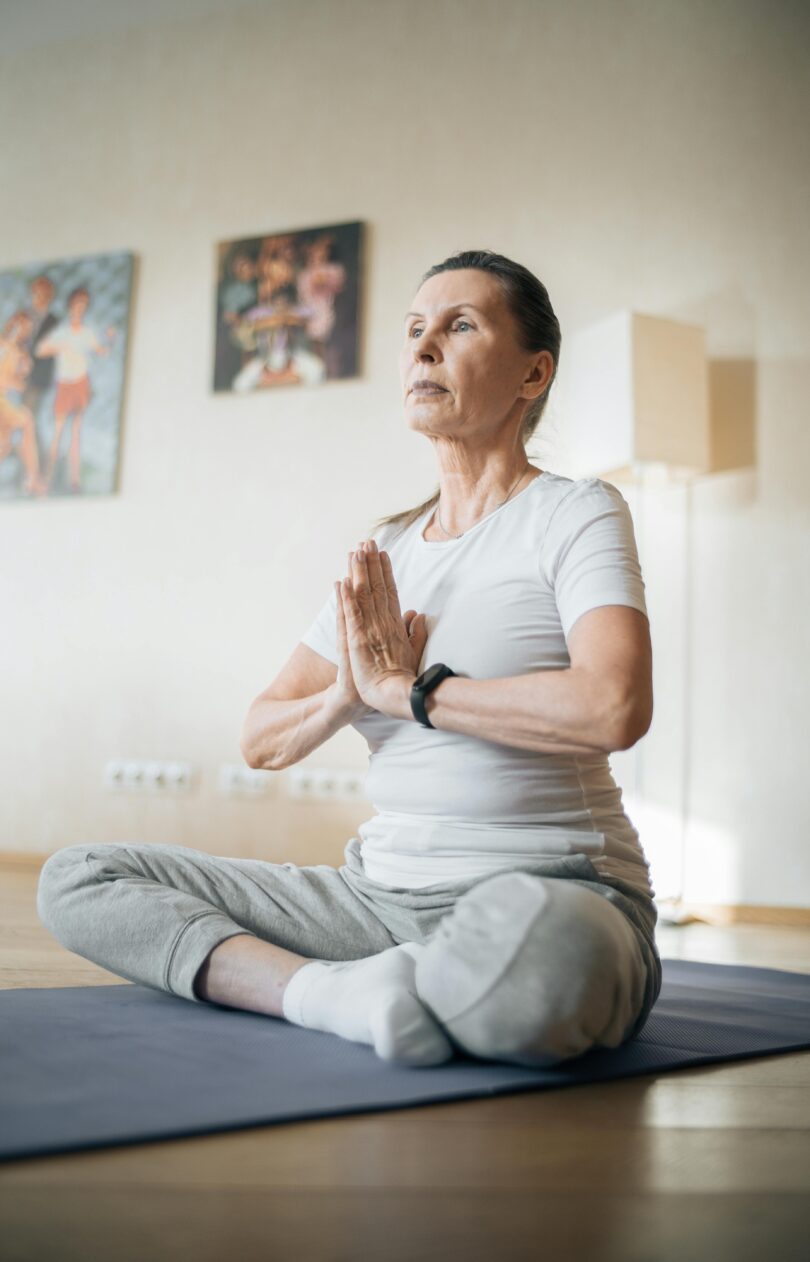Table of Contents
In today’s fast-paced world, the need for holistic well-being becomes increasingly important, especially for seniors. One avenue that has gained immense popularity is the practice of yoga at home. This article delves into the world of “Yoga at Home for Seniors,” exploring the benefits, practical tips, and the transformative power that yoga holds for the older generation.
Benefits of Yoga for Seniors
Improved flexibility and joint health
Yoga, with its gentle stretches and poses, plays a pivotal role in enhancing flexibility and promoting joint health for seniors. The fluid movements help in maintaining a full range of motion, preventing stiffness that often accompanies aging.
Enhanced balance and stability
As we age, balance becomes a crucial aspect of daily life. Yoga addresses this concern by incorporating poses that focus on balance and stability, reducing the risk of falls and injuries among seniors.
Stress relief and mental well-being
The practice of yoga goes beyond physical benefits. Seniors engaging in yoga at home experience stress relief, improved mental clarity, and a sense of calm. The meditative aspects of yoga contribute significantly to mental well-being.
Creating a Comfortable Space
Setting the stage for a successful yoga practice involves creating a dedicated and comfortable space at home. Seniors should choose a quiet area, free from distractions, and invest in suitable yoga accessories such as non-slip mats and supportive props.

Simple Yoga Poses for Seniors
Gentle seated stretches
Seniors can start with easy seated stretches to warm up their muscles. These poses, performed from a comfortable chair, focus on the neck, shoulders, and spine, promoting flexibility without putting strain on the joints.
Standing balance exercises
Including standing balance exercises in a home yoga routine helps seniors improve stability. Simple poses like the tree pose or heel-to-toe stand can be adapted to various fitness levels.
Relaxation poses for tranquility
To conclude the practice, seniors can indulge in relaxation poses such as Savasana. This lying-down pose promotes a sense of tranquility and allows the body to absorb the benefits of the session.
Importance of Proper Breathing
Proper breathing is a cornerstone of yoga, especially for seniors. Deep breathing techniques, coupled with synchronized movements, help in oxygenating the body, reducing stress, and promoting overall respiratory health.
Related Article : Teaching Chair Yoga to Seniors
Yoga Equipment for Seniors
Choosing the right equipment is essential for a safe and enjoyable yoga practice at home. Seniors may benefit from using props like blocks and straps to modify poses according to their comfort level and physical abilities.
Safety Precautions
Before embarking on a home yoga journey, seniors should consult their healthcare professionals, ensuring that yoga is suitable for their individual health conditions. Additionally, following proper form and listening to their bodies during practice can help prevent injuries.
Staying Consistent
Establishing a regular yoga routine is key to reaping the full benefits. Seniors should find a time that suits their schedule, making yoga a consistent part of their daily or weekly activities.
The Social Aspect of Home Yoga
Engaging in virtual yoga classes or online communities can provide seniors with a sense of camaraderie and support. Connecting with like-minded individuals fosters a shared journey toward wellness.
Testimonials and Success Stories
Real stories from seniors who have embraced yoga at home can serve as inspiration for others. These testimonials highlight the positive impact of yoga on physical and mental well-being, encouraging more seniors to join the movement.
Addressing Common Concerns
Seniors may have reservations about starting yoga. Addressing common concerns such as physical limitations, fear of injury, or uncertainty about where to begin can empower them to take the first step toward a healthier lifestyle.
Incorporating Mindfulness
Mindfulness is a key element of yoga. Seniors can benefit from being present in each moment of their practice, fostering a deep connection between mind and body. Mindful meditation can further enhance their overall well-being.
Nutrition and Hydration Tips
Supporting a yoga practice with a balanced diet and proper hydration is essential. Seniors should focus on nutrient-rich foods to fuel their bodies and stay adequately hydrated for optimal performance.
Tracking Progress
Maintaining a yoga journal allows seniors to track their progress over time. Celebrating small achievements, whether it’s touching toes for the first time or holding a pose for an extended period, can be incredibly rewarding.
Frequently Asked Questions (FAQs)
Is yoga safe for seniors with health conditions?
Yoga can be safe for seniors, but it’s crucial to consult with healthcare professionals to ensure it aligns with individual health conditions.
How often should seniors practice yoga at home?
Seniors can benefit from practicing yoga at least a few times a week. Consistency is key for optimal results.
Can seniors with limited mobility still do yoga?
Yes, yoga can be adapted for seniors with limited mobility. Gentle seated poses and modifications make it accessible for everyone.
Are virtual yoga classes suitable for seniors?
Virtual yoga classes provide a convenient and inclusive way for seniors to practice yoga, offering a sense of community and guidance.
Conclusion
In conclusion, “Yoga at Home for Seniors” offers a holistic approach to well-being. By embracing the physical and mental benefits of yoga, seniors can enhance their quality of life. Whether practicing simple stretches or engaging in mindful meditation, the journey toward wellness is both personal and transformative.
Related Article : Yoga Retreats for Older Adults: Embracing Wellness and Renewal







